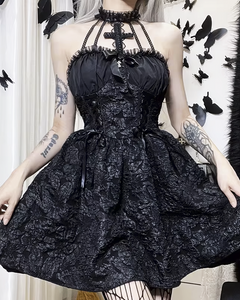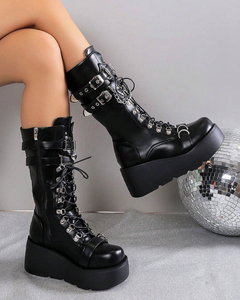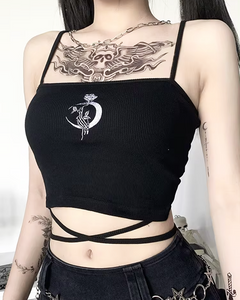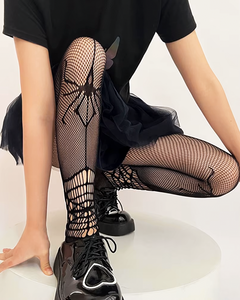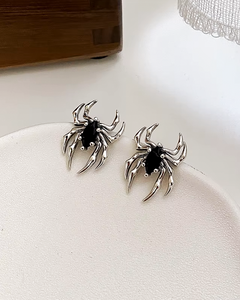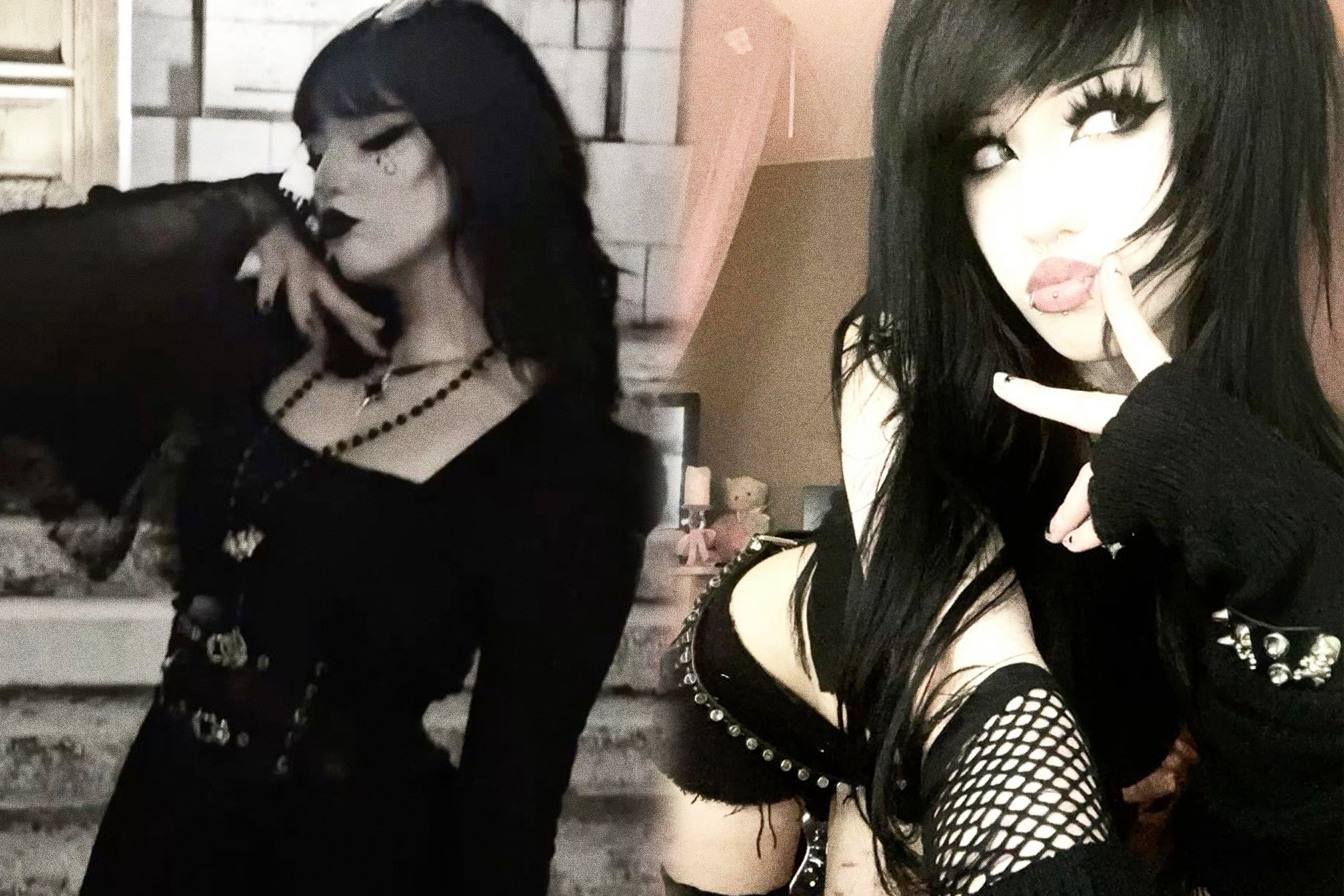Goth and emo are two of the most misunderstood subcultures in modern alternative culture. Both wear black, both are emotional, and both exist on the darker edges of music and fashion. Yet beneath the surface, they represent two very different ways of seeing the world. One turns sadness into art, the other into confession. One is timeless, the other fleeting. And although they often overlap in aesthetic, their hearts beat to entirely different rhythms.
Goth emerged from post-punk's ruins in the early 1980s — cold, mysterious, poetic. It was never about being sad; it was about turning darkness into beauty. Emo, born from hardcore punk in the mid-1980s and revived in the 2000s, wears its emotions raw and loud. It's not about elegance, but honesty. Where goth celebrates melancholy as an art form, emo treats pain as something to shout into the void.
That's the simplest way to tell them apart: goths romanticize the darkness, emos internalize it. Or as one might say — a goth sees the beauty in the fucked parts of the world, an emo is sad about the fucked parts of the world.
Goth vs. Emo at a Glance
| Aspect | Goth | Emo |
|---|---|---|
| Origin | Early 1980s UK, evolving from post-punk and darkwave | Mid-1980s USA, evolving from hardcore punk and emocore |
| Core Theme | Beauty, mystery, and the romantic side of darkness | Emotional pain, heartbreak, and personal struggle |
| Music Style | Atmospheric, poetic, haunting (The Cure, Bauhaus) | Raw, melodic, confessional (My Chemical Romance, Rites of Spring) |
| Fashion | Victorian, dark, elegant, lace and leather | Casual, youthful, band tees, skinny jeans, dyed hair |
| Mindset | Contemplative, artistic, fascinated by the macabre | Emotional, vulnerable, expressive and self-reflective |
| Modern Evolution | Expanded into industrial, darkwave, and fashion subcultures | Evolved into pop-punk and later emo rap |
Music: The Sound of Darkness

Music is the soul of both goth and emo, and their biggest point of divergence. Goth was born from post-punk, creating an atmosphere that felt cold yet emotional, distant yet intimate. Bands like Bauhaus, Siouxsie and the Banshees, and The Cure crafted songs drenched in reverb, echo, and melancholy. Their lyrics explored beauty, death, love, and existential despair — but with poetry and elegance. Goth music is not angry; it's haunting, reflective, and deeply visual.
Emo began as emotional hardcore in the 1980s, taking punk's aggression and turning it inward. Instead of rebellion against the system, emo rebelled against silence. Bands like Rites of Spring and Embrace screamed about heartbreak, loneliness, and identity. When emo resurfaced in the 2000s, bands like My Chemical Romance and Dashboard Confessional brought vulnerability to the mainstream. The sound was passionate, melodic, and deeply personal. Emo music is catharsis; goth music is atmosphere.
Fashion: Turning Emotion into Style

Both goth and emo express themselves through what they wear, but their visual languages differ completely. Goth fashion is art in motion — inspired by Victorian mourning, medieval romance, and cinematic darkness. Black is the foundation, but the details matter: lace gloves, corsets, long coats, platform boots. Makeup is pale and sculpted — black eyeliner, dark lipstick, and a look that feels timeless. Goths don't dress to fit in or stand out; they dress to transform.
Emo fashion, on the other hand, was born from teenage rebellion and suburban angst. It's accessible, fast, and emotional. Skinny jeans, striped shirts, studded belts, and band T-shirts became the uniform. Hair is usually dyed black, with long bangs covering one eye — a literal symbol of hiding behind emotion. While goth style feels like a painting, emo style feels like a diary entry. Both are authentic, but one looks outward to art, the other inward to self.
Mindset and Philosophy

The philosophical difference between goth and emo runs deep. Goth is about confronting darkness and finding beauty in it. It's introspective, yes, but not necessarily depressive. Goths see pain as a source of art — something to be sculpted, understood, even admired. There's a calm detachment in the goth mindset, a poetic fascination with decay and mortality. It's not self-pity; it's transformation.
Emo, in contrast, is emotional transparency. It's about wearing your heart — and your wounds — on your sleeve. Emo doesn't romanticize sadness; it amplifies it. It's a cry for understanding in a world that feels isolating. Where goths channel pain into art, emos turn it into connection. Their sadness is not decorative — it's real, lived, and unfiltered.
This is why the two appeal to different generations. Goth, with its roots in art and philosophy, draws people who love the beauty of contradiction. Emo, with its roots in punk and honesty, speaks to those who crave emotional validation. Both offer refuge — one through art, the other through empathy.
Cultural Legacy

Over time, both goth and emo have been shaped and reshaped by culture. Goth never truly went mainstream; it stayed underground, evolving into new forms like industrial or dark fashion. Its influence can be seen in film, literature, and even haute couture — from Tim Burton's characters to Rick Owens' runway shows featuring dark style pants and gothic boots. Emo, meanwhile, became the first internet-born subculture, exploding through MySpace and Tumblr. It gave a voice to millions of young people who felt unseen, turning vulnerability into a movement.
Today, their legacies still echo. Emo lives on in emo rap and indie revival scenes, while goth continues to inspire designers, artists, and musicians around the world. Both subcultures have survived because they speak a universal truth: sadness, when expressed, can become something powerful.
Conclusion
So, what's the real difference between goth and emo? Goth finds art in despair; emo finds connection in pain. Goth turns darkness into poetry; emo turns heartbreak into confession. Both embrace emotion, but through different lenses — one timeless, one raw, one distant, one intimate.
They are two sides of the same shadow, each beautiful in its own way.


